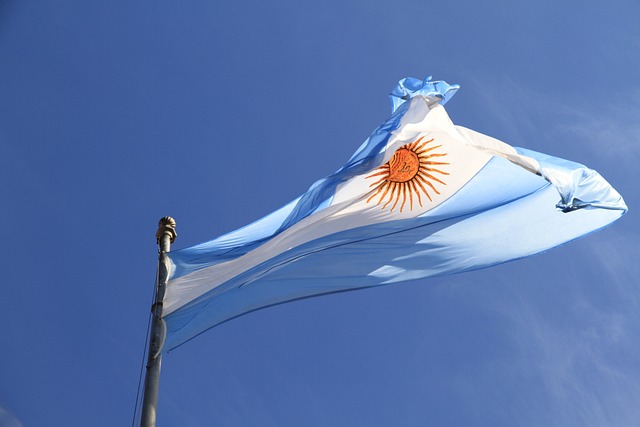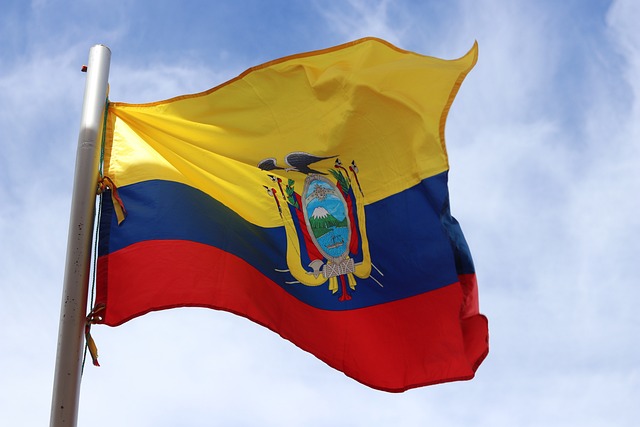UPDATED December 2025
South America is a widely diverse and beautiful continent, home to 12 different countries. Though each country has their own stories relating to migration and immigration, a few details unite and unify the continent among the many cultures and peoples that inhabit the lands. Much of South America’s history involving migration pertains to the colonial period and the slave trade, where European travelers settled on the continent, as well as shipped enslaved peoples from Africa and India to provide labor.
Because of this, South America has become a melting pot of different peoples and cultures, with many residents being of mixed descent. Since the extremely justified revolutions and subsequent declarations of independence across the 12 countries, South Americans have enjoyed travel and migration to other nations across the world. In the US alone there are approximately 5.6 million individuals living in the states who are South American or descended from South American immigrants as of 2019.
Here you’ll find resources to aid your family history search in South America!

Argentina

The Republic of Argentina encompasses most of the southern peninsula of South America and is the second largest country on the continent, behind Brazil. The nation declared its independence in 1816, following centuries of Spanish rule, with the nation leading revolutionary efforts across the continent.
Argentina has a long and storied history when it comes to the migration of its peoples, both in and out of the country. Argentina is very much a melting pot of all different peoples and cultures, ranking only second place in the number of citizens descended from immigrants to the United States. Thus, if you have ancestors who migrated from Argentina, it is likely that they moved from somewhere else first.
Research sources
https://ourpublicrecords.org/argentine-names/
https://www.britannica.com/place/Argentina
https://en.wikipedia.org/wiki/Argentines
https://www.familysearch.org/en/wiki/Argentina_Genealogy
https://www.thefhguide.com/project-9-argentina.html
https://www.jewishgen.org/infofiles/argentina.html
Bolivia

The Plurinational State of Bolivia is a landlocked country located in central South America between Brazil and Argentina. The country is known for the Andes Mountains and Lake Titicaca. While Spanish is the most widely spoken language in the region, there exist over 36 indigenous languages still used throughout the country.
Bolivia has a few different ethnic groups that have migrated all over the world, with the highest concentrations of descendents of Bolivian immigrants being in nearby Argentina. Some of the different ethnic groups in Bolivia include indigenous Bolivians, those who are native to the region, Mestizo Bolivians, those descended from both indigenous and caucasian immigrants, White Bolivians, those descended entirely from white settlers, Afro Bolivians, those descended from slaves brought over during colonial times, as well as small groups of Asian Bolivians.
Research sources
https://ourpublicrecords.org/bolivian-names/
https://www.britannica.com/place/Bolivia
https://en.wikipedia.org/wiki/Bolivians
https://www.familysearch.org/en/wiki/Bolivia_Genealogy
https://travel.state.gov/content/travel/en/us-visas/Visa-Reciprocity-and-Civil-Documents-by-Country/Bolivia.html
Brazil

The Federative Republic of Brazil is not only the largest country in South America, but in all of Latin America as well. Home of most of the Amazon river, the nation contains over 200 million citizens, which accounts for one third of the total population in Latin America. The country sets itself apart from other Latin American countries by using Portuguese as their national language, rather than Spanish.
As of 2022, there were over 1.9 million descendents of Brazilian immigrants living in the United States, with significant populations also in Portugal, Paraguay, and the United Kingdom. In the US, the states with the highest number of Brazilian descendents are Massachusetts, New York, and Florida, with 46th street of New York City being named Little Brazil due to its large number of Brazilian Americans living in the area and spreading their culture.
Research Sources
https://ourpublicrecords.org/brazilian-names/
https://www.britannica.com/place/Brazil
https://en.wikipedia.org/wiki/Brazilian_diaspora
https://www.familysearch.org/en/wiki/Brazil_Genealogy
https://en.geneanet.org/fonds/?id_filter_block=search-filter-geo&loc_1=BRA&size=10
Chile

The Republic of Chile can be found on the western shore of the South American continent and is home to Easter Island and Cape Horn. While the nation was colonized by Spanish settlers, as most South American countries were, there has been a recent surge of influence from Indigenous cultures, with its people practicing a mix of native, Spanish, and Indian traditions.
As stated above, Chile was colonized by the Spanish, who maintained control over the nation until gaining independence in 1818. Descendents of Chilean immigrants can be found all over the world in such countries as Argentina, Spain, Australia, and Sweden, with a sizable population in the United States. Due to the history of colonization, many Chilean descendents claim to be Mestizo, or a mix of both native Chilean and European bloodlines, so this should be considered when doing any genealogical research.
Research sources
https://ourpublicrecords.org/chilean-names/
https://www.britannica.com/place/Chile
https://en.wikipedia.org/wiki/Chileans
https://www.familysearch.org/en/wiki/Chile_Genealogy
https://files.lib.byu.edu/family-history-library/research-outlines/LatinAmerica/Chile.pdf
https://search.findmypast.com/search-world-records/chile-marriages-1579-1930
Colombia

The Republic of Colombia is known for its coastline and proximity to central America, being located right where the two continents meet. The nation is home to a diverse population of people, most being of mixed indigenous and caucasian descent, or mestizo. Cities in Colombia feature a mix between indigenous culture and western influence, with more and more citizens embracing native traditions each day.
Colombia has one of the largest diasporas in Latin America, with many citizens choosing to move elsewhere due to unstable politics in the region, and armed violence within the country. The United States currently has the highest population of Colombian descendents living within its borders, followed by Venezuela, Spain, and Mexico.
Research sources
https://ourpublicrecords.org/colombian-names/
https://www.britannica.com/place/Colombia
https://en.wikipedia.org/wiki/Emigration_from_Colombia.
https://www.familysearch.org/en/wiki/Colombia_Genealogy
https://lawyerscolombia.com/obtaining-in-colombia-copies-of-birth-certificate-marriage-certificate-and-death-certificate/
Ecuador

The Republic of Ecuador rests on the northwestern portion of the South American continent and is known for many contributions to the scientific world. Multiple expeditions and experiments have been conducted in the region, from geographical explorations, natural sciences, and ecological studies.
Mass migration from Ecuador is relatively recent, really starting up around the mid 20th century. The countries with the highest population of Ecuadorians are Spain and the United States. Migration from Ecuador has been typically brought about by economic issues, with the country relying heavily on petroleum exports and tourism to stay afloat.
Research sources
https://ourpublicrecords.org/ecuadorean-names/
https://www.britannica.com/place/Ecuador
https://en.wikipedia.org/wiki/Emigration_from_Ecuador
https://www.familysearch.org/en/wiki/Ecuador_Genealogy
https://forebears.io/ecuador
https://www.registrocivil.gob.ec/
Guyana

The Republic of Guyana is a relatively new country in South America, having declared its independence in 1966. However, The region has a long and storied history, having been used by settlers primarily for its abundance of natural resources, including gold mines, sugar cane, and rice fields. Guyana stands apart from other countries on the continent by using English as its main language, as opposed to Spanish or Portuguese.
Guyana has been nicknamed the Land of six peoples in reference to the six largest ethnic groups who call the country home, those being the indigenous peoples, and the descendents of Indian, European, Chinese, Portuguese, and African immigrants.
Research sources
https://ourpublicrecords.org/guyanese-names/
https://www.britannica.com/place/Guyana
https://en.wikipedia.org/wiki/Guyanese_people
https://gbggs.org/
https://sites.rootsweb.com/~nyggbs/MainTranscriptionpage.htm
https://gro.moha.gov.gy/
Paraguay

The Republic of Paraguay is a landlocked country located near the southern edge of the continent. The nation has a very storied and complicated history, having been involved in multiple wars with other South American countries and having had a brutal civil war in 1947.
Migration away from the country has historically been brought about due to the many socio economic issues throughout the country, as well as an authoritarian government causing stress and turmoil among citizens. While things are looking up for the people of Paraguay, particularly in economic endeavors, the country still faces many issue that cause people to leave and start new lives elsewhere.
Research sources
https://ourpublicrecords.org/paraguayan-names/
https://www.britannica.com/place/Paraguay
https://en.wikipedia.org/wiki/Paraguayan_Americans
https://www.familysearch.org/en/wiki/Paraguay_Genealogy
https://forebears.io/paraguay
https://en.geneanet.org/fonds/?id_filter_block=search-filter-geo&loc_1=PRY&size=10
https://www.ru.nl/hdsc/online-sources/suriname-civil-registry/
Suriname

The Republic of Suriname, or Dutch Guiana, is one of the smallest countries in South America and is located on the northern coast of the continent. Despite being a relatively small nation, Suriname is known for its diverse population of peoples and its lush rainforest, of which contains a multitude of essential natural resources.
Unfortunately, Suriname has been host to a number of conflicts in recent years, which has affected the population and caused many to immigrate elsewhere, with the Netherlands being a popular destination. French Guiana and Belgium also contain sizable populations of citizens descended from Surinamese immigrants.
Research sources
https://www.britannica.com/place/Suriname
https://en.wikipedia.org/wiki/Surinamese_people
https://www.familysearch.org/en/wiki/Suriname_Genealogy
https://www.ru.nl/hdsc/online-sources/suriname-civil-registry/
https://netherlands.consulate.gov.sr/consular-affairs/info-registry-office/
Uruguay

The Oriental Republic of Uruguay lies on the southeastern portion of the continent, right between Brazil and Argentina. The land is known for its abundance of open space and relatively stable democracy, especially in comparison with other South American countries that have been wrought with colonialism.
Many of Uruguay’s younger citizens tend to migrate elsewhere in hopes of finding economic opportunities elsewhere, particularly in Europe and North America. Despite the relative stability of the nation’s government, there have been multiple economic and social crises that have caused much of the population to move elsewhere.
Research sources
https://ourpublicrecords.org/uruguayan-names/
https://www.britannica.com/place/Uruguay
https://en.wikipedia.org/wiki/Emigration_from_Uruguay.
https://www.familysearch.org/en/wiki/Uruguay_Genealogy
https://search.findmypast.com/search-world-records/uruguay-marriages-1790-1930
https://egov.traceinternational.org/country_categorization/50/20
Venezuela

The Bolivarian Republic of Venezuela is located on the northern coast of the continent, right by the Caribbean sea and the Atlantic Ocean. The nation also encompasses many Caribbean islands near its coast and ethnically diverse population.
While the country was doing well financially and socially in the early 21st century, the death of the Leader Hugo Chavez along with falling oil prices, their main export, have resulted in an unstable economy. This has led many of its citizens to settle elsewhere in hopes of finding opportunity and stability. The COVID-19 pandemic in 2020 also resulted in mass migration to neighboring countries, a conflict that still remains an issue for all nations involved.
Research sources
https://ourpublicrecords.org/venezuelan-names/
https://www.britannica.com/place/Venezuela
https://en.wikipedia.org/wiki/Venezuelan_diaspora
https://www.familysearch.org/en/wiki/Venezuela_Genealogy
https://sephardicgenealogy.com/regions/sephardim-in-the-americas/jews-of-venezuela/
https://travel.state.gov/content/travel/en/us-visas/Visa-Reciprocity-and-Civil-Documents-by-Country/Venezuela.html
Quickly and Easily Search Almost Anyone's:

Disclaimer: We rank sites based on our knowledge and experience. Our team visits each site and evaluates each one before placing it online. Though we do accept referrals, we guarantee that the information we share is accurate and that we will only pass on information that we think is helpful to our visitors. The referral fees that we receive go to paying our team and keeping our website operational.
OurPublicRecord.Org is a privately owned and operated website and is NOT affiliated with the US Government or any law enforcement agency.